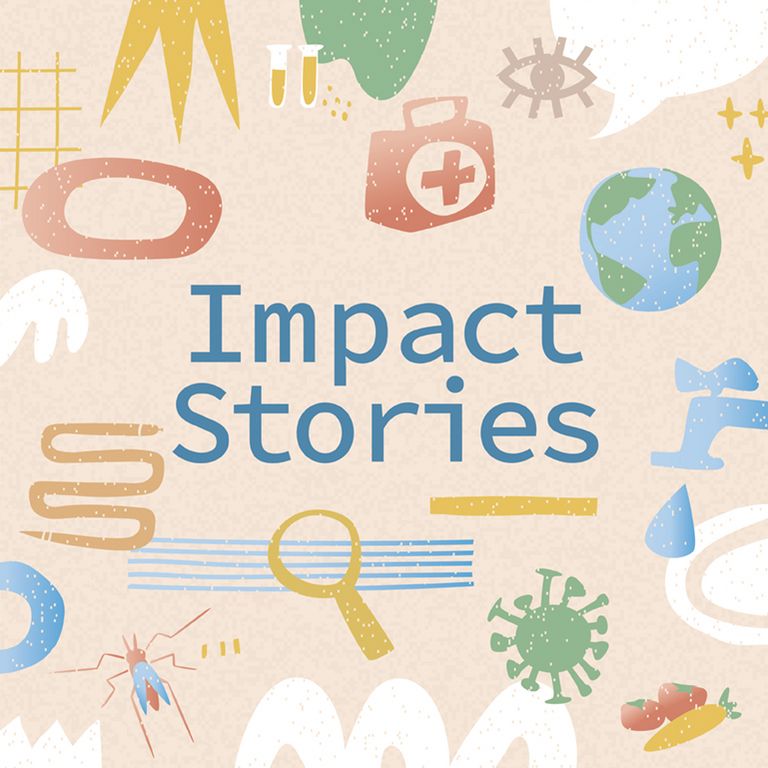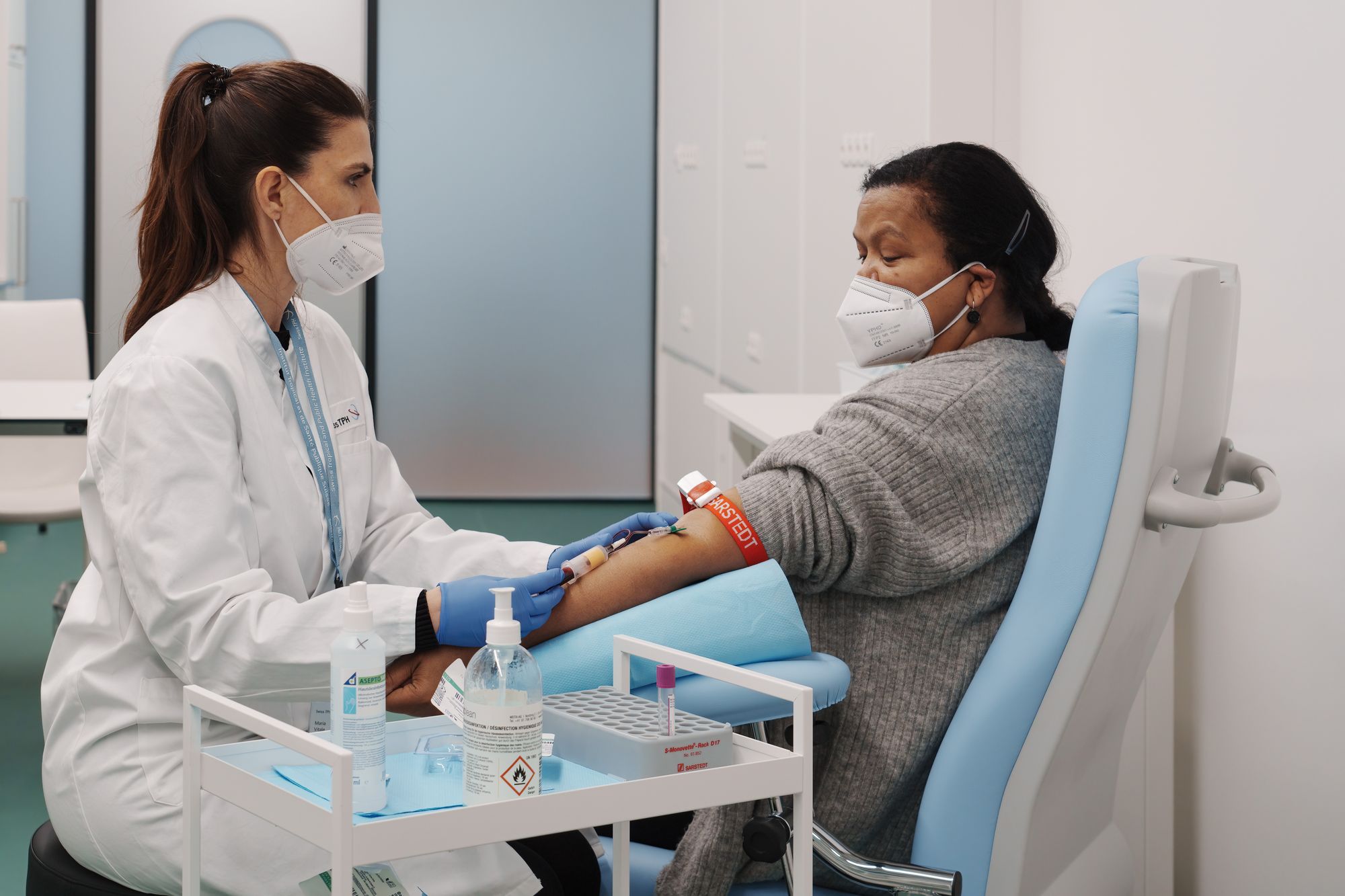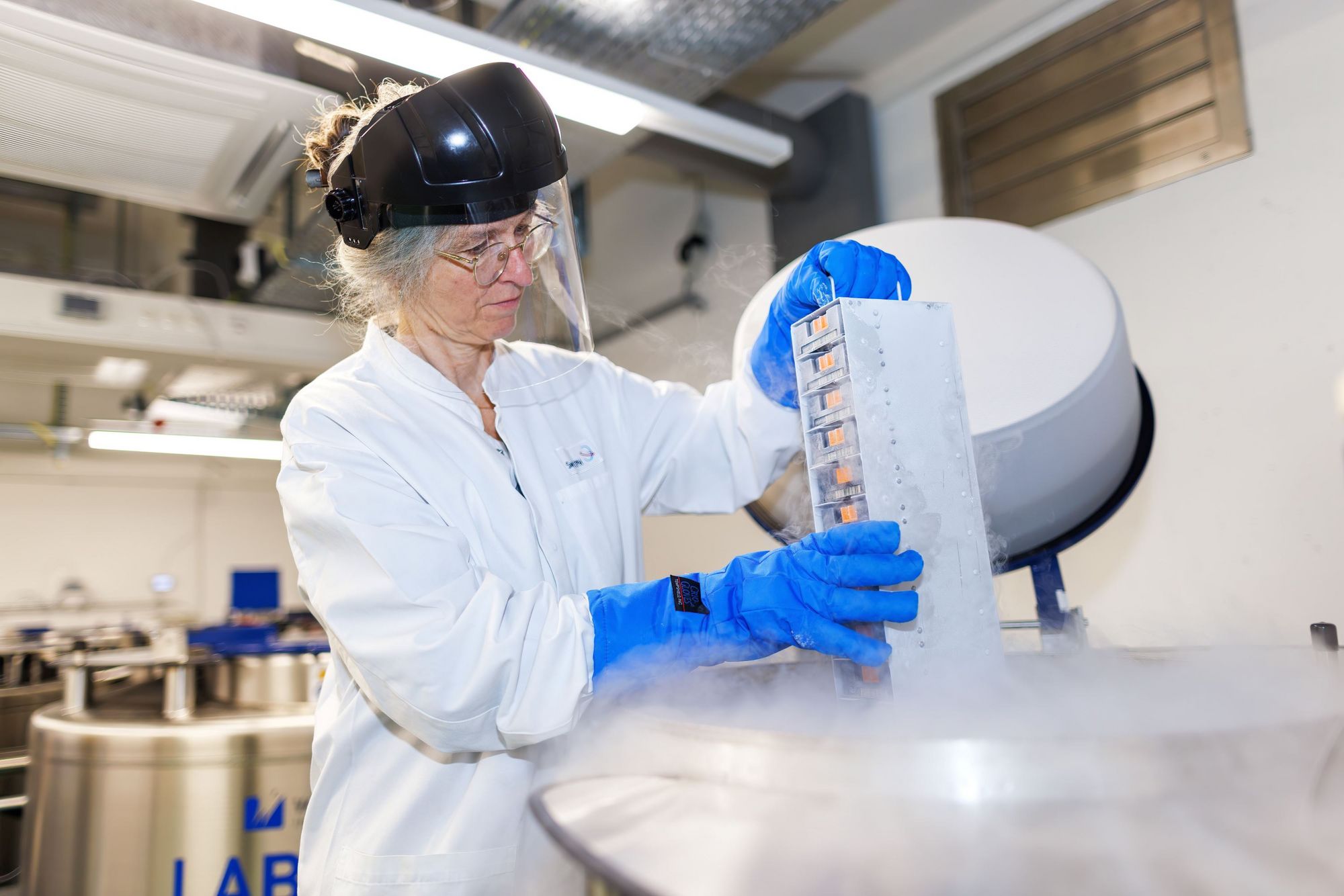

Around a quarter of the population in Switzerland suffers from chronic diseases. These are some of the most frequent causes of death and cause physical and mental stress as well as high healthcare costs. Swiss TPH has extensive expertise in long-term studies that conduct research into chronic diseases and the impact of behavioural and environmental factors.
Samples stored in biobanks provide evidence that support successful prevention and health promotion. They also help us to understand the long-term health impacts of air pollution, heatwaves, traffic noise or other harmful chemicals. In addition, biobanks are also the bedrock of medical progress in the early detection and diagnosis of chronic diseases, especially in cooperation with private companies. Swiss TPH is therefore making an important contribution to health monitoring in collaboration with other research institutions.
Good morning Nicole - can you tell us why it is important to look at health problems from a public health perspective?
Nicole Probst-Hensch: Being healthy means feeling mentally well and socially well-integrated. The importance of this broad public health perspective becomes particularly apparent in times such as the COVID-19 pandemic. Containment measures had to strike a fine balance between protecting people from infection and maintaining societal well-being.
Why is investment in the prevention of chronic diseases such a crucial issue?
In terms of infectious diseases, prevention means minimising the possibilities of transmission, for instance – from human to human or from animal to human – and vaccinating against specific pathogens. The prevention of chronic non-communicable diseases that increase as we age is far more complex, but the benefits of doing so are twofold. Firstly, far more people around the world die from cardiovascular diseases than from infections. The second aspect is that, interestingly, it is primarily these chronic and age-related diseases that increase our sensitivity to numerous infections.
What role do long-term studies – i.e. various population groups that are monitored over a long period of time – play in this?
What we now know about approaches for preventing non-communicable diseases comes from population cohorts, or long-term studies, with representative random population samples in which the same people are repeatedly surveyed and examined. A very long surveillance period is needed because behaviour, lifestyle, and social and physical circumstances only lead to chronic diseases many years to decades down the line.
Since these chronic diseases can be attributed to a variety of factors that act in unison on the human body, determining their disease-causing effect is only possible in the context of sufficiently extensive studies in which diverse factors are recorded and measured in the participants.

What, for example, has been discovered thanks to such long-term studies?
Thanks to such long-term studies, we know that tobacco consumption, a lack of exercise, an unhealthy diet and the associated excess weight significantly increase the risk of cancer, diabetes, cardiovascular and chronic pulmonary diseases.
Long-term studies are also used in environmental epidemiology – why is that?
A wide range of chemicals to which humans are exposed in our private and working lives, via the food we eat or in the environment contribute to diseases. People are unable to escape them individually. Their long-term effect on humans can only be monitored using human biomonitoring in the context of long-term studies with integrated biobanks.
To what extent do long-term studies also play a role in investigating the impacts of climate change on health?
The state of our environment has a massive influence on our health and our well-being. An intact environment fosters healthy human development. Conversely, environmental pollution is detrimental to health. Without long-term studies, we won’t be able to understand how the increase in the climate’s temperature and heatwaves impact health and well-being in the long term.
Swiss TPH has had a pioneering role in long-term studies with the SAPALDIA study. SAPALDIA is the biggest population cohort in Switzerland and has been running for 30 years. How have the research results influenced politics?
Among other things, we’ve been able to prove that air pollution is a major stress factor for health. Early SAPALDIA results led to the introduction of a limit value for particulate matter in the air in Switzerland. Subsequently, SAPALDIA was also able to prove that lung health improved thanks to the improvement in air quality in Switzerland. Nevertheless, we now know that Switzerland’s supposedly pure air is still leading to deaths. The biggest long-term risk is posed by excessive pollution caused by particulate matter and nitrogen oxides, which lead to respiratory and cardiovascular diseases. Estimates indicate that air pollution is responsible for between six and seven million premature deaths around the globe each year. To put that in context, around seven to 14 million people around the world have died as a consequence of COVID-19.
How did Swiss TPH contribute to tackling the COVID-19 pandemic with this expertise?
Swiss TPH immediately used its extensive expertise in setting up cohort studies to monitor the broad, long-term health impacts of the pandemic in order to implement the COVCO-Basel study with over 10,000 participants. Among other methods, it also did this in a national partnership, as part of the Corona Immunitas programme for monitoring the population’s antibody and vaccination status.

Why are so-called biobanks – biological samples such as blood or urine – important in researching chronic diseases?
The modern epidemiology of non-communicable diseases uses what are called biomarkers. Easily accessible biological samples such as blood or urine are tested for diverse molecules. They provide clues about biological mechanisms that are influenced by protection and risk factors. Or precision images of organs such as the brain, for example, offer an insight into early changes resulting from certain types of exposure. In other words, biobanks and image banks provide a previously undreamed-of insight into what happens in our body when we are exposed to certain protection or risk factors. They therefore help us to obtain a better understanding of the causes of diseases. We call this kind of modern environmental research exposome research.
In April 2022, Swiss TPH opened its new headquarters in Allschwil. What opportunities does the new infrastructure offer?
Our new head office, “Belo Horizonte”, offers us a modern research infrastructure for storing around 1.5 million samples from study participants in biobanks. Linked to extensive health and environmental data from their donors, the samples stored there are the bedrock of our pioneering work in researching chronic diseases. For example, one Swiss TPH study succeeded in proving that aircraft noise has an impact on health and can lead to sleep disturbances as well as cardiovascular and metabolic diseases. Thanks to the SAPALDIA biobank, we were also able to show on the basis of biomarkers that traffic noise influences stress mechanisms in the body. Findings such as these are incorporated directly into our work in advising political decision-makers.
How do you further support decision-makers?
Swiss TPH experts are members of the WHO Air Quality Guidelines steering committee and Switzerland’s Federal Commission of Air Hygiene which provides politicians with scientific advice on health issues. We are also members of the Federal Labour Commission or the expert commission that is monitoring the law on human genetic testing.